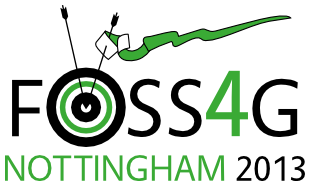Presentation
FOSS4G In AWS: Choosing, Deploying And Tuning Open Source Components In AWS
Mohamed Sayed (Nokia & OpenEgypt & others.)
09:00 on Friday 20th September (in Session 19, starting at 9 a.m., Auditorium)
Show in Timetable
In the past few years, cloud computing has become the preferred approach to providing web and other computing services. From cloud based personalized file storage to enterprise services , many organizations and various categories have embraced cloud computing. The most prominent public cloud provider being AWS provides services starting from basic infrastructure like cpu, ram and storage to higher level Platform as a Service like Queues and Relational databases. This presentation will cover the usage of AWS as a cloud provider from a geo-spatial usage point of view using Free and Open Source components. The goal is to provide a 360 degrees view on utilizing a public cloud like AWS for the development or deployment of FOSS4g elements. We will cover : 1-Use cases: why would AWS makes sense? We will focus on the following use cases: A-The premise of on demand computing resources, and using that for tile rendering, geocoding or route calculation. B-The premise of high availability and multi-region infrastructure and using that as a disaster recovery option. C-The premise of readily available infrastructure and using that to support ongoing development and testing. 2-What is available in AWS: A-Infrastructure components(various configuration of EC2 instances, storage types, etc) B-Software as a service components, covering queues, relational databases, etc. C-Scalability model in AWS: horizontal scalability vs vertical scalability. 3-Spatial data storage in AWS: A-Postgresql + PostGIS with OSM dataset: techniques on deployment, benchmarks on different infrastructure types. B-MySQL spatial with OSM datasets: techniques , benchmarks with different infrastructure types C-NoSQL storage: Using Solr as a POI storage: techniques, benchmarks using the geonames dataset. D-NoSQL storage: Using neo4j to store OSM or geonames data : techniques, benchmarks on various different infrastructure types. 4-Geocoding using FOSS in AWS: A-GISGraphy as a geocoder: background, techniques, benchmarks, issues. B-Foursquare's Twofishes: background, deployment, benchmarks, issues. C-Geocommons Geocoder: background, deployment, benchmarks, issues. 5-Routing using FOSS in AWS: A-Open Source Routing Machine: background, deployment, benchmarks, issues. B-OpenVRP: background, deployment, benchmarks, issues. 6-Tile Rendering using FOSS in AWS: A-Geoserver: background, deployment, benchmarks, issues. B-Mapserver; background, deployment, benchmarks, issues. 7-Summary and further readings About the presenter: Mohamed Sayed has over 17 years of professional experience in Software Engineering, System Engineering and Architecture. For the past 7 years he has been focused on Web Services at scale. Mohamed Sayed played a key role in building the Nokia's here.com Core Cloud platform serving major partners like Bing, Yahoo, Amazon, etc. He has a strong proponent of Open Source Software, and has been a Linux/BSD user since his teen years. He is currently working to evangelize and promote Open Source Software in Africa and especially Egypt.
